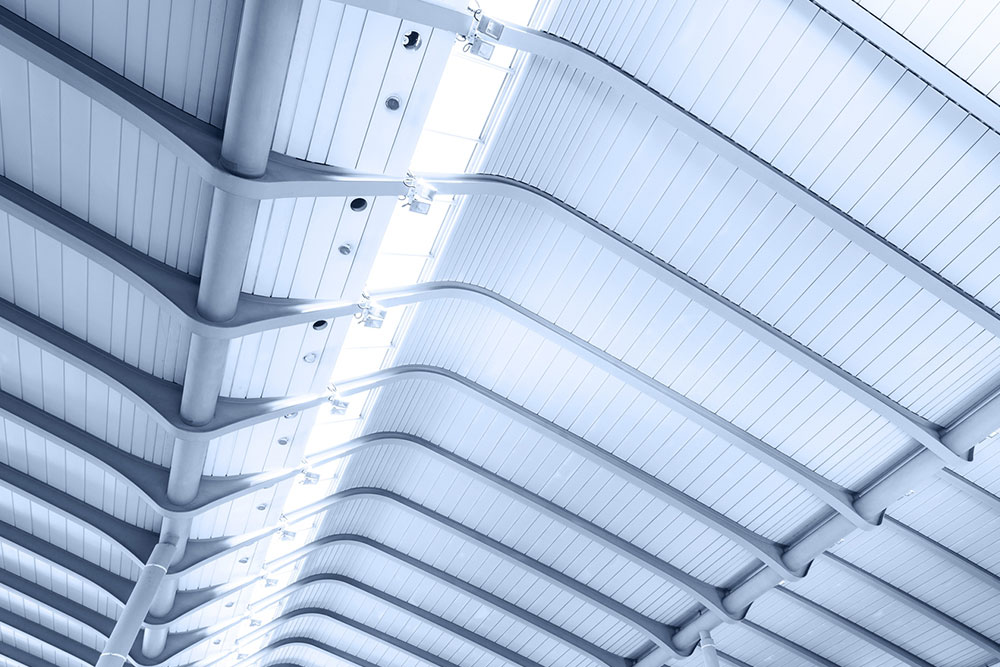
Prefabricated steel structures – Applications and challenges
Prefabricated steel structures, also called prefab buildings, are made with components designed and manufactured in one location and assembled in another. These buildings or structures consist primarily of roofs, structural subsystems, walls, deck panels, and other accessories, depending on the design. Prefabricated steel structures have now become an integral part of the construction industry, as they are durable, easy to assemble, sustainable for the environment, and don’t need much after-care.
Why prefab structures are better than traditional buildings
Apart from the main assembly difference, prefab buildings are widely different from traditional buildings. There are some key differences to note.
- Construction cost
The construction components are pre-cut and pre-drilled, so there is hardly any material wastage on site. This also saves labor costs, making prefab structures cheaper than traditional buildings. - Speed
Prefab structures usually take less time to make since they are manufactured in enclosed spaces, and their timelines are rarely affected by changing weather conditions. In some cases, they can be erected in a few weeks instead of years, as in the case of traditional buildings. - Transportation
Prefab structures require more careful planning and logistics to transport than traditional buildings. They also last a long since they do not crack, rot, rust, or warp.
Prefabricated steel structure applications
These steel structures are used widely in many types of construction projects.
- On-site offices
Construction sites often see contractors, subcontractors, workers, and project managers working in the open or makeshift spaces for hours on end. They can benefit from investing in a cheaper on-site office. This can also work for construction security offices, which can house construction equipment for a bare minimum cost. The office can be placed on the site or the outskirts nearby. - In-plant storage solutions
Prefab structural mezzanines are excellent storage solutions for increasing square footage in a plant. They are temperature-controlled for safe storage and can be customized to meet business needs. - Retail and commercial buildings
Prefab steel structures provide customization and design liberty and can maximize storage space, so they are also commonly used in retail and commercial buildings. The speed of construction, cost-effective features, and resistance to fire or pests also make them popular. - Industrial buildings
Warehouses, manufacturing plants, distribution centers, and other structures needing large open spaces can also benefit from prefabricated steel structures. This is because steel is a durable and economical material that can withstand heavy loads. - Agricultural buildings
These include barns, storage sheds, and animal shelters that need strength to protect livestock and equipment. Prefabricated structures also need less maintenance and can be customized, making them perfect for agricultural buildings. - Recreational buildings
Many sports facilities, gyms, and community centers that need to be built quickly also use prefab steel structures.
Challenges with using prefabricated steel structures
- Perfect assembly and alignment required
While prefab steel structures have some benefits, the common challenge is assembling them. This requires precise planning and execution since any issue with alignment or fit can jeopardize the entire assembly process. - Short life span
Prefabricated structures usually last up to 25 years. Even though they are durable, this timeframe may not suit some construction requirements, like those for permanent or long-term structures where a longer lifespan is desired. - Less water resistant
Prefabricated structures may not be as water-resistant as required, and addressing any leakage issues in joints may necessitate additional materials and steel. So, it needs extra care with sealing and waterproofing during construction. - Lack of expansion
Despite growing demands and innovations, prefab structures lack scale and are statistically witnessing slower development than traditional buildings. - Issues with transportation
Manufacturers need to adhere to road rules when transporting prefabricated structures. So, because of load or size constraints, transportation and assembly might be affected. Besides, it is also relatively more tedious to transport structures over long distances. - Poor breathability
Steel is non-porous, which means air cannot pass through it. This makes the construction non-breathable and can cause issues like condensation and mold growth. That being said, innovations like fans or louvers allow air to flow through the prefab structures and vapor barriers, helping prevent moisture entry.
Innovations and future of prefabricated steel structures
Prefab manufacturing companies now use advanced composite materials with higher strength-to-weight ratios and better corrosion resistance. Another latest development is responsive steel structures, which use sensor technology to monitor structural health in real time. Also, 3D printing of steel structures is another effective method that has enhanced the planning stage. Printing can be done on-site during assembly, which can greatly help with precise assembly.
Automated construction, where workers only supervise, perform quality control, and conduct digital design for better visualization of the finished project, is also used. Apart from this, self-healing steel may also be developed and used in the future, and it will be equipped to repair small cracks or damage automatically. This will significantly revolutionize the industry. Additionally, steel structures use green design, eco-friendly materials, and energy-harvesting technologies to use natural energy sources like solar and wind for construction-related activities.




